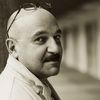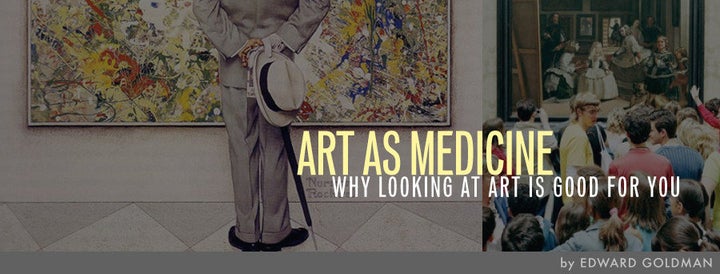
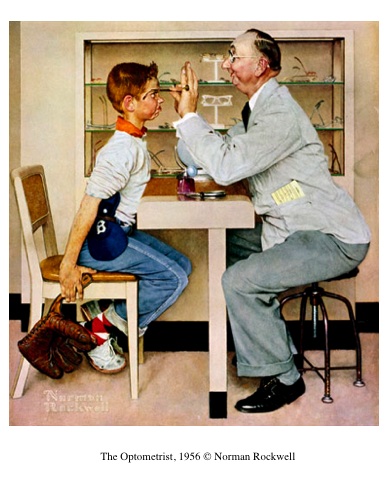
Many moons ago I went to see a doctor to check my eyesight. He sat me down and instructed me to look at the wall behind him. I tried to do just that but my eyes simply refused to follow his order. There on the wall, behind his back, was the ugliest poster I had ever seen. "Doctor," I pleaded, "Can I look at something else? That is too painful to look at." "What's wrong?" he asked. So I told him that my eyes hurt because the art in his office was so bad. There was a pause and then he turned around to look at the poster as if he'd never seen it before. "Funny, I never paid attention to it. Is it that bad?" he sheepishly asked. "You bet", I said, "and if you don't remove it someone may sue you for damage to their retina. " Instead of throwing me out of the office, the poor fellow allowed me to climb onto my favorite soapbox to deliver a soliloquy on the positive impact of art on our everyday lives and on the damage that bad art inflicts on so many of us.
"Mr. Goldman, what do you do for a living?"
"Well, Doctor, it's difficult to explain but primarily I talk about art..."
This past encounter resurfaced when I looked at my files of interesting articles on the intersection of art and health. In 2006, Randy Kennedy reported for The New York Times that "art and medicine have worked hand in hand for a long time." To hone their drawing skills artists in the past, like Leonardo da Vinci, dissected human bodies. Now, medical students in many schools, including Yale, Stanford, and Cornell, are adding art-appreciation courses to their curriculum in the belief that the art of looking is vital to the medical profession. A study published in 2001 in the Journal of the American Medical Association suggests that looking at art improves a medical student's observational abilities.
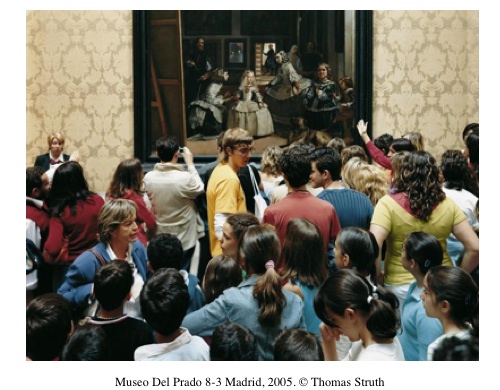
In the Los Angeles Times' Health Section, I read an article titled, " The Healing Canvas" by Jenny Hontz, in which therapists claim that art can soothe the mind and body and that now, science backs them up. A study of 300 people--ages 65 and older-- found that art, "boosted the immune system and decreased loneliness." So, my fellow Americans, hear me now if you want to save on your future medical bills. And, I'm quoting from the article, "Those who participated in art groups also had fewer doctor visits and used less medication than those in control groups." What do you think of that? For years, I advocated the curative power of art and, finally, it seems that the medical profession is catching up with me.
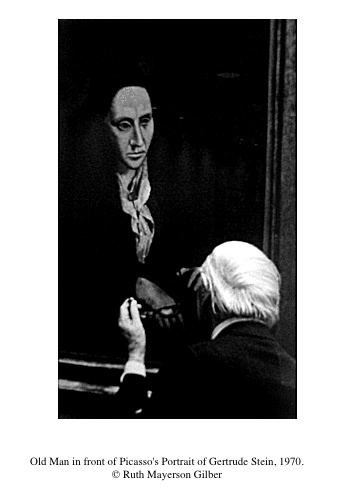
At the same time, a long held belief that prayers by strangers can positively affect the process of recovery is now found to be not valid. An article in The New York Times by Raymond Lawrence, an Episcopal priest and director of pastoral care at Columbia University Medical Center, states that a $2.4 million study found that "strangers' prayers did not help patient's recovery." It only helped the people who prayed to feel better.
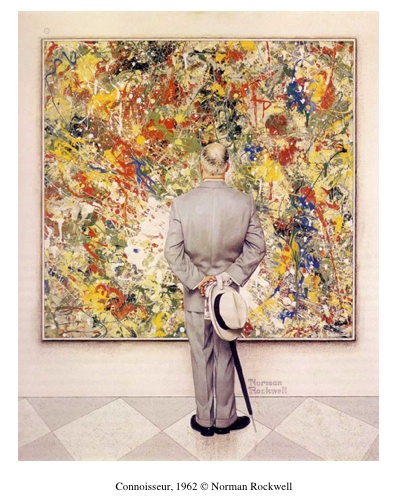
All of that confirms my strong belief that exposure to art and letting it be a part of your everyday life, does tremendous good-- to your soul, to your body and yes, to your pocket.
Edward Goldman is an art critic and the host of Art Talk, a program on art and culture for NPR affiliate KCRW 89.9 FM.
Sources:
Jenny Hontz, "The Healing Canvas: Art can Soothe the Mind and Body, Therapists Say. Now Science Backs them Up.", Los Angeles Times, March 20, 2006, F1
Randy Kennedy, "Using Art to Train Doctors' Eyes", The New York Times, April 17, 2006, B1
Raymond Lawrence, "Faith-Based Medicine," The New York Times, April 11, 2006, A21
